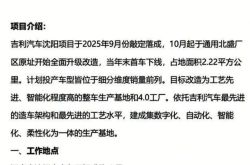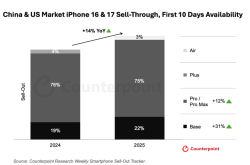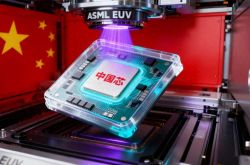Dongguan's Rise Amidst Tech Giants' Migration: A New Hub for Innovation?
![]() 05/09 2025
05/09 2025
![]() 1027
1027

Author | Meng Xiao | For more financial information, visit BT Finance Data Hub
This article consists of 3453 words and is expected to take 10 minutes to read.
Tech giants are spilling over from Shenzhen and converging on Dongguan, a mere 16-minute high-speed rail ride away.
Huawei's enterprise data center has relocated to Songshan Lake in Dongguan, boasting 12 server rooms and 3000 cabinets—eight times the size of its Shenzhen counterpart. OPPO and vivo have followed suit, establishing their global R&D centers in Dongguan. DJI has even acquired 500 acres of land in the Binhai Bay New Area to build a drone "aircraft carrier base."
Even Shenzhen-based BYD has moved its battery research institute to Tangxia Town, while Alibaba has invested 8 billion yuan to construct its Cainiao South China headquarters in Mayong Town. JD.com is constructing a 500,000-square-meter intelligent logistics park, "Asia One," in Fenggang Town, Dongguan.
For a time, Dongguan became the "second hometown" of tech giants, drawing the attention of numerous investors. A massive industrial migration has quietly commenced.
A city previously known for its service industry suddenly welcomes a "high-stakes game." Will Dongguan transform into a city of technology?
1. A City on the Rise
Registered population of 2.78 million, GDP of 1.23 trillion yuan
The latest data reveals that Dongguan's GDP totaled 1.23 trillion yuan in 2024, surpassing the trillion-yuan mark in 2021 and continuing to develop steadily. It ranks 24th nationwide, trailing Nantong by only 100 billion yuan. Nantong has a registered population of 7.3483 million, while Dongguan has a registered population of 3.0787 million—less than half of Nantong's. However, Dongguan's permanent resident population is 10.4853 million, indicating a migrant population of 7.41 million, 18 times that of Nantong's 0.4017 million. Despite this, Dongguan's per capita GDP is 117,000 yuan, compared to Nantong's 152,500 yuan. Nevertheless, Dongguan's attraction is evident, given the disparity in migrant population scales.
Dongguan covers an area of 2460.38 square kilometers, one-fifth of Nantong's 10,549 square kilometers. Its ability to achieve a GDP on par with Nantong is attributable to its manufacturing industry, dubbed the "World Factory," and robust overseas trade.
Geographically, Dongguan is strategically located—north of Guangzhou, south of Shenzhen, and east of Hong Kong. Within a 50-kilometer radius, it gathers 75% of the GDP of the Guangdong-Hong Kong-Macao Greater Bay Area. In 2024, the GDPs of Guangzhou, Shenzhen, and Hong Kong were 3.1 trillion yuan, 3.68 trillion yuan, and 3.18 trillion yuan, respectively, totaling nearly 10 trillion yuan.
While Dongguan is the farthest from Hong Kong, at over 100 kilometers and about a one-and-a-half-hour drive away, it is relatively close to Shenzhen and Guangzhou, both within an hour's drive. Dongguan's "stopwatch-timed" transportation network is a significant advantage, with a high-speed rail ride to Shenzhen taking only 18 minutes. The Guangzhou-Dongguan-Shenzhen region has achieved a half-hour living circle through railways. Even with Huawei relocating to the Songshan Lake base in Dongguan, the impact on over 30,000 engineers commuting from Shenzhen is minimal, thanks to 80 commuter buses.
What truly entices these internet giants is Dongguan's youthfulness, with an average age of less than 34 years, even younger than Shenzhen's. With decades of manufacturing experience, the fusion of manufacturing and technology in Dongguan is advantageous. Coupled with the country's policy focus on the Greater Bay Area, Dongguan enjoys favorable conditions, attracting figures like Jack Ma, Richard Liu, and Ren Zhengfei, indicating its unique advantages.
2. Dongguan's Competitive Edge
Dongguan boasts a superior geographical location but enjoys lower housing prices compared to Guangzhou and Shenzhen. Shenzhen leads the nation in housing prices, ranging from 58,000 to 70,000 yuan per square meter. Some core areas (like Nanshan and Futian) have housing prices exceeding 100,000 yuan per square meter. Despite these high prices, Shenzhen's second-hand housing prices increased by 0.3% month-on-month in 2025, indicating strong rigid demand. Guangzhou's housing prices range from 32,000 to 46,000 yuan per square meter, ranking fifth nationwide, with central areas like Tianhe and Yuexiu having prices close to 80,000 to 100,000 yuan per square meter.
As a "third-tier city," Dongguan's housing price growth, even leading among third-tier cities, is relatively low compared to Shenzhen and Guangzhou. Current housing prices range from 16,000 to 35,000 yuan per square meter, ranking third in Guangdong Province. Areas adjacent to Shenzhen (like Chang'an and Humen) have prices exceeding 40,000 yuan per square meter, closely tied to Shenzhen's overflow demand. The cumulative increase in housing prices over the past decade has been 160%, second only to Shenzhen, directly related to the increase in Shenzhen's overflow population. In February 2025, second-hand housing transactions surged by 483% year-on-year, potentially linked to this massive industrial migration.
The cost of land may be the fundamental reason behind this industrial migration. A large factory cited a straightforward reason: "The land price here is one-fifth of that in Shenzhen, and the cost of recruiting talent is 30% lower!" Huawei's relocation also had similar considerations. As the smallest first-tier city in terms of area, Shenzhen currently faces a shortage of industrial land, leaving enterprises like Huawei unable to further expand their factories. In an interview, Ren Zhengfei admitted that the proliferation of real estate projects in Shenzhen has led to a scarcity of large industrial land. Modern industry has significant land demands, and the increasing cost of land resources undoubtedly compresses growth space. Additionally, land development in Shenzhen has tended towards saturation, with few new land supplies, making Huawei's relocation a necessary measure. Similarly, companies like BYD have also considered migrating some operations to Dongguan.
While Huawei's headquarters remains in Shenzhen, many of its R&D and production departments have relocated to Dongguan, leveraging Dongguan's superior conditions. The two cities are relatively close, and as a satellite city of Shenzhen, Dongguan has always accommodated Shenzhen's overflow population. Nowadays, it not only accommodates overflow population but also meets production and living needs that Shenzhen cannot satisfy or are too costly.
Dongguan has vigorously collaborated with the entry of high-tech enterprises, investing 50 billion yuan to build the Binhai Bay New Area, now known as the "Lujiazui of the Greater Bay Area." Tencent's digital bank and Ping An Technology's financial headquarters have already set foot here. Dongguan then joined forces with the Chinese Academy of Sciences to establish the "Guangdong-Hong Kong-Macao Greater Bay Area Integrated Circuit Research Institute," aiming to mass-produce 14-nanometer chips within three years. Currently, the "Shenzhen-Dongguan Innovation Corridor" has become a reality, with Huawei's Songshan Lake laboratory sharing data in real-time with its Shenzhen headquarters. DJI's new drones tested in Dongguan can be mass-produced in Bao'an factories the next day, without affecting operational efficiency.
The influx of numerous technology enterprises has led to a surge in R&D investment in Dongguan. In 2023, R&D investment accounted for 3.2% of GDP, with 10,190 high-tech enterprises and over 12,000 invention patents authorized.
Today, Dongguan's industry has undergone an upgrade, with the proportion of traditional clothing and toy manufacturing declining, and high-end industries such as electronic information, intelligent terminals, and new energy emerging. One-third of the world's mobile phones and 50% of smart wearable devices are produced in Dongguan. The 1.2-square-kilometer Huawei Songshan Lake base houses 100,000 R&D personnel, Alibaba's 24 billion yuan investment in its Cainiao logistics center, and the 500,000-square-meter JD.com "Asia One" logistics park, among other leading enterprises, forming an industrial cluster that drives over a thousand related supporting enterprises. Simultaneously, the explosion of brand industry chains around OPPO and vivo has formed the world's most complete electronic information industry chain, with the semiconductor and integrated circuit industry exceeding 60 billion yuan in 2024.
3. Bridging the Gap: Dongguan and Shenzhen
In 2024, Shenzhen's GDP was three times that of Dongguan. The GDP growth rates of Shenzhen and Dongguan were 5.8% and 4.6%, respectively. There is a 2.45 trillion yuan gap between Dongguan's GDP and Shenzhen's, and Dongguan's GDP growth rate is also lower. Even if Dongguan's industry upgrades again in the future and its GDP growth rate exceeds that of Shenzhen, assuming Dongguan's growth rate is consistently 0.5% higher, it would still take over 200 years for the totals to be equal. If Dongguan's GDP growth rate is 10% and Shenzhen's is 5%, Dongguan would still need 44 years to catch up. In terms of per capita GDP, Shenzhen's was 183,000 yuan in 2022, compared to Dongguan's 101,000 yuan. If Dongguan maintains a 7% growth rate and Shenzhen a 4% growth rate, the per capita gap may approach parity around 2050. It is unlikely for Dongguan to catch up with Shenzhen in the short term.
Currently, the enterprises that have left for Dongguan are mostly low value-added for Shenzhen. In recent years, Shenzhen has proactively relocated low value-added manufacturing industries through policy guidance, concentrating resources on developing high-end industries such as artificial intelligence and the digital economy. In 2025, the added value of strategic emerging industries accounted for over 45% of the total. This situation is similar to Beijing's past, which relocated some low value-added enterprises to neighboring cities, primarily Hebei and Tianjin. Although these relocated enterprises significantly stimulated local employment and the economy, they did not overall affect Beijing's core position in the Beijing-Tianjin-Hebei region. The GDP totals of surrounding cities have even been further widened by Beijing.
Shenzhen's innovative ecosystem is relatively robust. In terms of R&D investment, Shenzhen stands alone in the country. A report by Beiqing Net on December 15, 2024, showed that Shenzhen has gathered over 2600 artificial intelligence enterprises, 6 unicorn companies, 34 listed robotics enterprises, and 9 unicorn companies, with an R&D investment intensity of 5.8%.
Data shows that Shenzhen's total R&D investment in society reached 223.661 billion yuan in 2024, an increase of 18.9% year-on-year, maintaining double-digit growth for nine consecutive years. The total amount and intensity of R&D investment (as a percentage of GDP) both rank second among Chinese cities. Among them, the total enterprise R&D investment ranks first in the country, accounting for 6.46% of the city's GDP, an increase from the previous year. Enterprise R&D investment accounts for 93.3% of the total R&D investment in society, highlighting Shenzhen's innovation ecosystem with enterprises as the mainstay.
Shenzhen has ranked first in the country for 20 consecutive years in terms of PCT international patent applications, forming a full-chain innovation system of "basic research + technological breakthrough + industrialization of achievements." Companies like Tencent and DJI still use Shenzhen as their core R&D base, often relocating manufacturing. Shenzhen has achieved remarkable results in strategic emerging industries, with a significant increase in the number of enterprise R&D personnel. For example, the number of R&D personnel at Shenzhen Energy increased by 103.94% year-on-year. The proportion of R&D investment in strategic emerging industries such as intelligent connected vehicles, semiconductors, and artificial intelligence has increased significantly, driving the added value of related industries to exceed 1.5 trillion yuan. The Shenzhen-Hong Kong-Guangzhou technology cluster has ranked second globally for five consecutive years, supporting technological breakthroughs and achievement transformations.
Each city has its unique characteristics and advantages, and Dongguan can certainly carve out its development path. By leveraging its manufacturing strengths and integrating high technology, Dongguan aims to build a smart manufacturing center. With the location advantage of the Guangdong-Hong Kong-Macao Greater Bay Area, Dongguan is gradually transforming from a "World Factory" to a high-tech innovation center. This magnificent transformation of Dongguan is not only not a threat to Shenzhen but also allows Shenzhen to have more collaborative advantages.
After all, land resources are extremely valuable in Shenzhen, with the actual development intensity exceeding 50%, far surpassing the international warning line of 30%. The rise of Dongguan may divert the land demand of Shenzhen enterprises.
This article is an exclusive creation by BT Finance and is protected by copyright. Unauthorized use, copying, distribution, or adaptation of this content is strictly prohibited. Legal measures will be pursued against any infringement.








